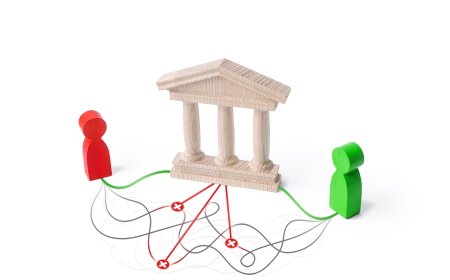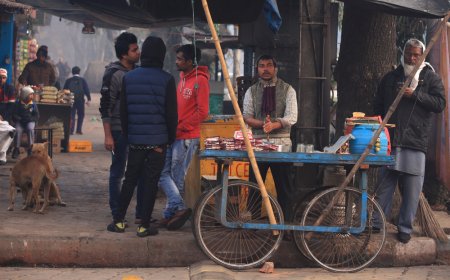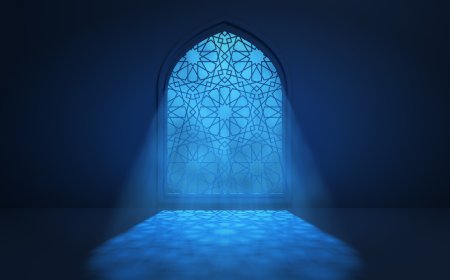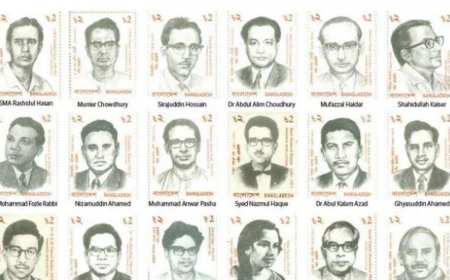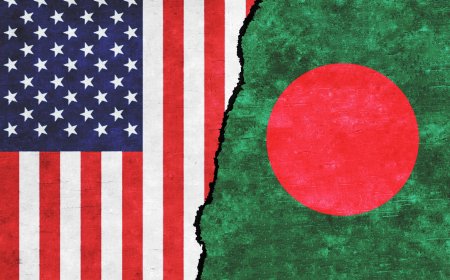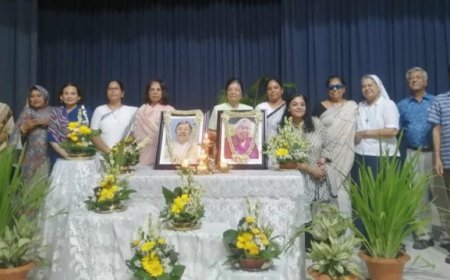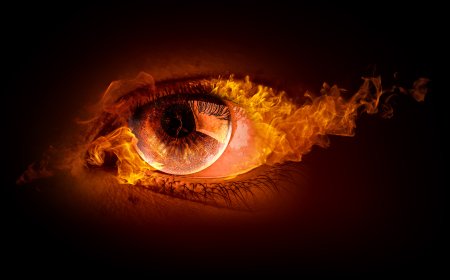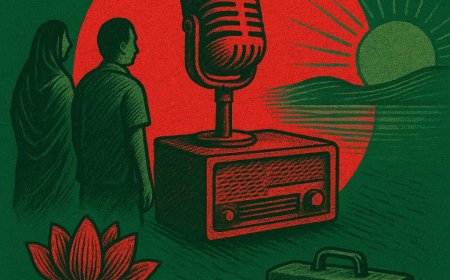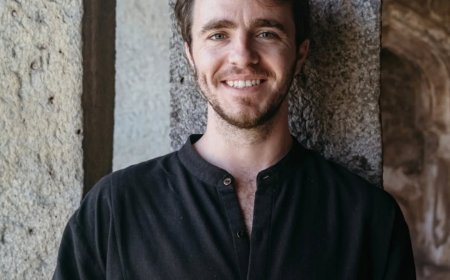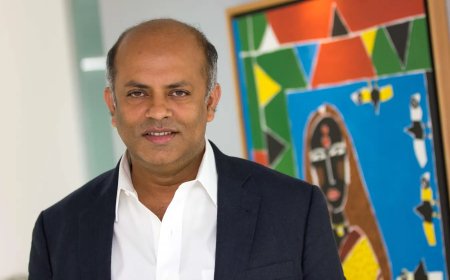Will the Angry Young Man Ever Leave Our Films?
From Bollywood’s Animal to Dhaka’s Toofan, Southasia’s film industries are recycling a dangerous archetype, the violent, hypermasculine hero. Despite changing times, new platforms, and more diverse audiences, this “angry young man” refuses to fade from the screen. Why does he still sell, and what does that say about us?

In the Bangladeshi box office sensation Toofan, released in 2024, the titular character, armed with a minigun, enters a club full of crooks, murderers, and racketeers. He mows everyone down in a hail of bullets, bodies collapsing in seconds, all for the offence of talking back at him.
Aside from this inclination for ultraviolence, the character shares a few other traits with Ranvijay, protagonist of the 2023 Hindi blockbuster film Animal. He has the same hair, same attire, and the same mannerisms -- enough similarities to justify saying that the Toofan (Storm) character is a copy, while the two storylines are completely different.
Using the pseudonym Toofan, he is revealed as a crime boss named Galib Bin Ghani, and has Ranvijay’s penchant for misogyny, as demonstrated by his physical and verbal abuse towards Suchona, his romantic interest.
Ranvijay and Toofan are portrayed as the masculine ideal although Toofan emerges as a villain, unlike his heroised counterpart.
Toxic Masculinity
Violence and toxic masculinity are no novelty in Indian and Bangladeshi cinemas; they have just taken a new form. In Bangladesh, action and crime films, produced aplenty and often inspired or copied from Hindi, Tamil and Telugu industries, rake in millions. Recent examples include Bangladeshi actor Shakib Khan who stars in Toofan, Taandob, and Borbaad.
Why do such films, and their angry protagonists, have such a grip on the audience?
Ahmed Tahsin Shams, graduate researcher of Cinema Studies, Media Arts and Sciences at Indiana University Bloomington, thinks this obsession with machismo is not only universal, but as old as time.
“Pick any religious myth from around the globe, say, Thor in Norse legends or Achilles in The Iliad, and you’ll spot the same hypermasculine blueprint, whether it’s a tale from millennia ago or a blockbuster remake today,” he told Sapan News.
For audiences, especially those grappling with economic stress, social uncertainty, or personal insecurities, such heroes offer a quick fix, adds Shams. “Watching Prabhas in Baahubali single-handedly conquer armies feels empowering, like a warm hug from a familiar story that says: One strong guy can fix it all.”
However, all the splattered blood and bulging veins inadvertently reveal the problematic sides of society.
Roshni Islam, who works at a non-government organisation, has been watching local films ever since the state-owned television channel Bangladesh Television reached her home in 2000.
The heroes in commercial cinema, she tells Sapan News, are representations of “the culture of toxic masculinity already present in society.” Such films facilitate this culture by glorifying violence and misogyny, she adds.
For Humayun Kabir, who runs an automotive business in Dhaka, there’s a stark difference between films of this time and yesteryears. “Back then, the main characters used their speech to resolve conflicts more often and take the higher ground. Now, they focus on brandishing weapons and gaining power, using money to run gangs and cause violence,” as he told Sapan News.
In her article “How the ‘Pan‑India’ Movie Phenomenon Embodies, And Redefines, Toxic Masculinity”, Rohitha Naraharisetty, senior associate editor at The Swaddle, signals the return of the “angry young man” of the 1970s, often played by the Indian superstar Amitabh Bachchan. However, today’s version does not “direct the anger at societal injustice”, writes Naraharisetty -- he is simply just angry all the time.
Box Office Returns
Women, she observes, remain “mere props whose lives are only relevant insofar as they further the man’s character arc.”
Despite concerns and criticisms, creators underscore that the financial success of these films keeps the cycle running. Animal collected over USD 90 million in the box office and Toofan USD 4.8 million. Filmmaker Mitali Ray told Sapan News that movie theatres, particularly in rural areas, still rely on big action spectacles to fill seats.
“Hypermasculine films typically guarantee box-office returns. Even as a female filmmaker, I occasionally encounter pressure to either cast a hypermasculine male lead or risk not receiving a wide release because distributors frequently reject films without a ‘hero-driven’ plot,” she says.
“Hypermasculine films also monopolize resources on a technical level,” explains Ray, pointing out that there are few funds available for smaller, creative projects. Most of the money goes into formulaic films with fight scenes, stunts, and opulent sets, leading to a stagnation in the industry.
And this is where all the copying comes in, as actor and journalist Naziba Basher puts it, talking to Sapan News: “It is a fact that we have opted to adopt whatever does well in Bollywood; put a local spin on it, make the actors grow the same stereotypical facial hair, and we seem to think we have a blockbuster in our hands!”
Filmmakers in erstwhile East Pakistan began copying Hindi films in the 1950s, notes anthropologist Harisur Rahman in his journal article ‘Bollywoodization or ghettoization? The Bangladeshi dream Factory is in disarray’ (Studies in South Asian Film & Media, 2017). Fast forward to the 1980s, when the adoption of video cassette recorders or VCRs, enabled the plagiarism of Tamil and Telugu films.
Rahman goes as far as to say that most Bangladeshi films since the country’s independence have been copies of India’s Hindi, Tamil and Bengali films, besides Pakistan’s Urdu films and dramas, and even western films including those of Hollywood.
Amid recurring bans on screening Indian and Pakistani films in Bangladesh, and before the arrival of the VCR, Bangladeshi filmmakers would “visit Kolkata under the pretext of pilgrimages to religious shrines, watch Hindi and Bengali films, record the soundtracks and copy them in Bangladesh”, says Rahman.
According to his research, filmmakers used to buy 16 mm prints of these films, while some directors even “bought actual footage of difficult scenes and spliced it physically to the film to avoid the physical and mental labour of filming.”
So, is there no escape from this cycle of replicating and perpetuating the hypermasculine archetype?
Rahman hints at hope -- the existence of parallel or alternative cinema, in both Bangladesh and India.
The 2025 box-office hit Utshob, a Bangladeshi adaptation of Charles Dickens’ A Christmas Carol is an example of how well-made family dramas can compete with the “angry young man” genre. It collected over USD 400,000 after 29 days in the box office.
Ayman Asib Shadhin, one of the writers of Utshob, never expected the film to do so well in theatres. “When we decided to make Utshob, no one wanted to give us a shot,” he said. “Because they thought it won’t be successful, because people want item songs, violence, cussing, as well as a bit of romance and misogyny.”
However, Shadhin does not see this struggle ending anytime soon. “One Utshob will not bring change ... You name the genre, and we haven’t tried it; this is the level of our creative insulation,” he told Sapan News.
So, where do we stand? Naziba explains that there are audiences for both kinds of films, and creators decide who they want to appeal to. “Risks must be taken. As long as our creators make films just to pack halls, and not provide any message or something to ponder upon, we’ll keep producing Animal knock offs.”
Raihan Rafi, director of Toofan and Taandob, and actor Shakib Khan could not be reached for comments.
Shoaib Ahmed Sayam is a writer, journalist, and communications consultant living in Dhaka, Bangladesh. Reach him at [email protected].
This is a Sapan News syndicated feature available for republication with due credit http://www.sapannews.com.
What's Your Reaction?

















